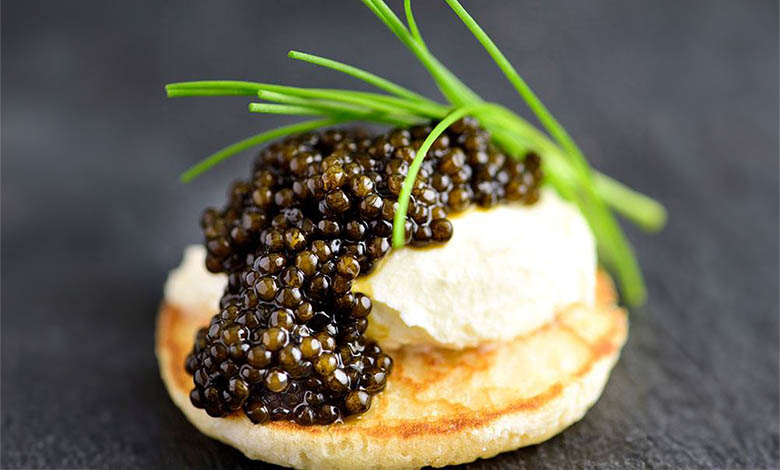Once a rare indulgence reserved for royalty, caviar, salt-cured sturgeon roe, has transformed into a symbol of elegance and culinary refinement. Caviar has deep historical roots in the Caspian and Black Seas, this delicacy has evolved from ancient Persian feasts to modern gourmet dining tables worldwide. Whether you’re a connoisseur or a curious newcomer, understanding caviar’s types, serving rituals, and tasting etiquette enhances the entire experience.
What Exactly Is Caviar?
Caviar comes from the roe (eggs) of sturgeon fish and has been enjoyed since the 1200s. Known for its refined flavour, texture, and exclusivity, it’s available in several varieties like Beluga, Ossetra, and Sevruga each differing in egg size, color, and taste. Once abundant even in the U.S., overfishing led to a shift in sourcing and stricter sustainability efforts.
Caviar must be served chilled, directly from the fridge, placed over crushed ice. Use glass, porcelain, plastic, or mother-of-pearl bowls never metal, as it distorts the flavour. Also, serve it with a mother-of-pearl or plastic spoon for a pure tasting experience. Freezing is discouraged, as it degrades the texture.
Pairing Tips and Tasting Rituals
To enjoy caviar, serve ½ to 1 ounce per person. Let it sit on your tongue to discover its buttery, nutty, and briny notes. Classic pairings include blinis, buttered toast points, or even plain kettle chips. For beverages, vodka, Champagne, or a dry white wine complement the salty richness. A popular trend is the “caviar bump”, enjoying it directly from the back of the hand.
How to Pick Quality Caviar
Top-tier caviar features large, glossy, firm eggs with a rich taste. The best caviar contains just roe and salt, with minimal processing. Grades are typically:
Grade 1: Large, firm, uniform eggs with superior flavour
Grade 2: Smaller, softer, less uniform but still enjoyable
Avoid heavily pasteurized or preserved caviar as it sacrifices taste for shelf life.
Common Mistakes to Avoid
Caviar novices often make mistakes like:
-
Using metal spoons.
-
Mixing it with strong condiments.
-
Serving at room temperature.
-
Freezing it unnecessarily.
-
Caviar is best enjoyed with respect to its subtlety and freshness.


